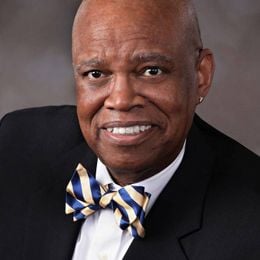Employers: A Key to Boost Financial Wellness of Minorities
Financial wellness scores are low for African Americans and Hispanics
African Americans and Latinos scored considerably lower in financial wellness than whites and Asian Americans in a recent report from Financial Finesse, a financial wellness provider. But the report, Optimizing Wellness Programs for a Diverse Workforce, also says employers can do quite a bit to help remedy the disparities.

Specifically, Financial Finesse says, firms could offer more onsite financial literacy programs tailored to specific minority groups.
A few of the report’s findings, based on analyzing 38,302 financial wellness employee assessments completed in 2016:
- A disproportionate number of employees in the “struggling” and “suffering” categories of financial wellness are African Americans and Hispanics
- Among those with incomes under $60,000, only 46 percent of African Americans said they have a handle on their cash flow vs. 68 percent of whites and 66 percent of Asian Americans
- Among those with incomes of $60,000 to $100,000, just 32 percent of African Americans and 39 percent of Hispanics said they regularly pay off their credit card balances in full vs. 51 percent of whites and 70 percent of Asian Americans
- 35 percent of African Americans and Hispanics feel confident their investments are allocated properly vs. 50 percent of whites and 46 percent of Asian Americans
- 66 percent of African Americans and 69 percent of Hispanics save enough in their retirement plan to capture the full company match vs. 80 percent of whites and 88 percent of Asian Americans
- 26 percent of African Americans and 37 percent of Hispanics have emergency funds vs. 55 percent of whites and 72 percent of Asian Americans
Huge Gaps in Retirement Savings
The report may explain some of the reasons for the huge gap in retirement preparation of African Americans and Hispanics when compared to white Americans.
In 2013, the average white family had more than $130,000 in retirement accounts vs. $19,000 for the average African American family and $12,000 for the average Hispanic family, according to the Urban Institute.
Financial Wellness and Cultural Differences
The lower financial wellness figures may be due, in part, to cultural differences, the Financial Finesse report said.
“Some of the reasons are lower incomes and other social economic factors,” says Tania Brown, the report’s author. “They start off at lower incomes and higher debt.” That can go on for generations, she added. Also, caregiving is more prevalent among minority groups, meaning extra out-of-pocket costs and financial stress.
The report defines financial wellness as a state of financial well-being where a person has a manageable level of financial stress, including a lifestyle at or below their financial means and a strong foundation, including adequate emergency savings and no high-interest debt.
The Role for Employers
Here’s where employers come in: Employees with low or no assets, uncomfortable levels of debt and poor cash management behaviors cost their employers money, the Financial Finesse report says. Specifically, Financial Finesse estimates, employees with the lowest levels of financial wellness could cost their employers $94 to $198 a year per employee.
“Low financial wellness is a threat to the organization, not just the employee,” says Brown. “It can lead to absenteeism and health issues.”
Companies have an opportunity to break the financial wellness pattern by understanding the behaviors associated with it and the cultural differences that may influence behaviors, according to financial planners.
Says Theodore Daniels, founder and president of the Society for Financial Education and Professional Development: “If a company is interested in improving productivity and knows that it has employees who have financial stress, it can reduce this with financial training at work.”
More employers are doing just that, or at least offering financial advice. The new Society for Human Resource Management 2017 Employee Benefits Report said that 49 percent of companies it surveyed offer employees financial advice, up from 28 percent in 2014.
Changing Benefits, Changing Financial Results
James Brewer of Envision Wealth Planning in Chicago and president of the Association of African American Financial Advisors, points to changes in other types of employee benefits as one reason for the low wellness scores of African Americans.
In his parents’ generation, says Brewer, getting a job at a big company with good benefits was an important cultural goal. “When you had companies with benefits, there wasn’t much to do. They opted you into programs, and they didn’t get a choice,” he notes. “You didn’t know how to do different things (like pensions and health insurance) and the company would do that for you.”
But today, few employers offer pensions. Instead, they may offer 401(k) or 403(b) retirement plans that generally require employees to opt in and make investment selections. Some employees aren’t comfortable making those choices.
“Most people still don’t understand employee benefits,” Brewer says. “They understand that they get a paycheck and choose how to spend that money. But they have little background on how to turn this income into wealth, how to use it to insure yourself so if something happens, you are prepared.”
Tweaking Wellness Programs for Different Audiences
Cultural differences of their employees may require that employers adopt different strategies with their financial wellness programs.
Daniels says he has had trouble attracting African Americans to financial seminars at churches. But providing them at their jobs is the perfect place, because they are already there.
“It is important to minorities, since we aren’t accumulating retirement savings at the rate we should,” he says. “Some companies are using nonprofit organizations to provide financial education to employees beyond the training that’s offered by 401(k) or 403(b) adviser. That’s especially important since some minorities see the advice from those retirement fund advisers as sales pitches.”
4 Ways Employers Can Assist
A few ways employers can reach African Americans and Hispanics to improve financial wellness, according to financial planners and financial literacy proponents:
Expand workshops to include entire families. “Have a friends-and-family day so the entire community can become financially well,” says Brown.
Have workshops directed to engage employees who do not understand financial concepts. “Get rid of financial-speak in a way that will cause change. Make it interactive. Instead of telling them what to do, show them what to do," says Brown.
Have workshops in Spanish for those who are uncomfortable with English.
Provide tools and resources, such as financial coaches, to walk them through financial concepts. “I do financial coaching. And sometimes just getting people to look at a credit report is difficult,” Brown says. Brewer thinks companies should give all employees who are eligible for their 401(k)s an hour with a financial planner. “That should be embedded into the 401(k) plan as one of the services that people get,” he says.
Daniels says some companies have discovered that minorities tend to use their 401(k) plans as piggy banks and have instituted policies to stop or slow the trend. For instance, Daniels notes, one company tells employees that once they join the retirement plan, they must stay in it for at least a year.
“A lot of minorities don’t realize there may be tax penalties” for 401(k) withdrawals, Daniels says. “They pull out $40,000 and get a check for $30,000. When you are under 59 ½, you will be penalized and have to pay taxes.” The Financial Wellness report said 58 percent of African Americans surveyed have taken out retirement plan loans, far more than the 34 percent of whites.
Daniels thinks that more financial education would boost minority employees’ financial wellness and prevent costly mistakes. “You have to let them know in the workplace,” he says. “They may not come out to any other forums to get that information.”
Next Avenue Editors Also Recommend:


